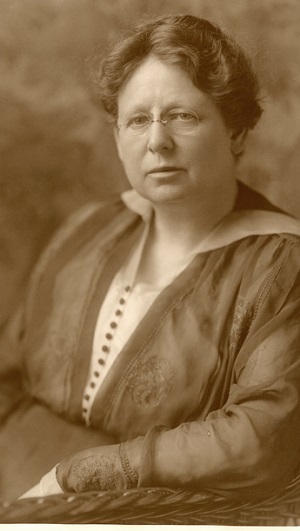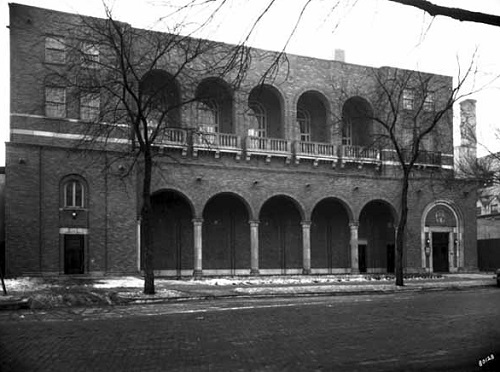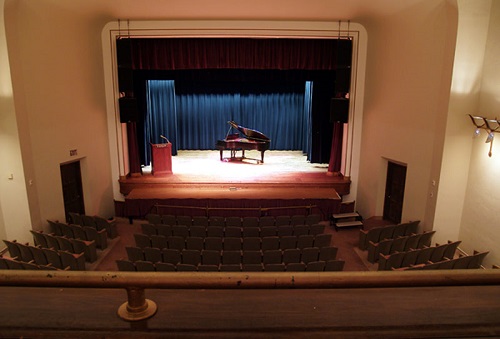Charity, Education, and Social Engagement: The Woman's Club of Minneapolis
 Thursday, February 10, 2022 at 6:43AM |
Thursday, February 10, 2022 at 6:43AM |  Michael Rainville Jr |
Michael Rainville Jr | Article by Michael Rainville, Jr.
Minneapolis has always been a hotbed for politics. From the rise of the Farmer-Labor Party in the early 1900s to the starting point of presidential campaigns, we are a progressive city. A major player in bringing forward these progressive ideals is the Woman’s Club of Minneapolis and its members who have fought for equal rights for everyone no matter where you come from, what you believe, or how much money you have.
 Gratia Countryman, 1917Like most things, the Woman’s Club of Minneapolis started out as an idea in 1907 when two friends, Mrs. Rankin and Mrs. Keyes, approached the Chief Librarian of the Minneapolis Public Library, Ms. Gratia Countryman and discussed the possibility of starting a new women’s organizations. Soon after, twenty-five prominent and influential women were invited to Ms. Countryman’s library office and the Club was born. The early years of the Club were vital to not only the Club’s success, but also the success of women in the area. Many members were involved in the rapidly growing women’s suffrage movement, such as Clara Ueland. When she wasn’t too busy campaigning for women to serve on the Minneapolis Board of Education, she was establishing free kindergartens throughout the city. Clara Ueland would later go on to be president of the Minnesota Woman Suffrage Association when the Nineteenth Amendment passed, which prohibits the state and the federal governments from denying the right to vote to citizens of the United States on the basis of sex.
Gratia Countryman, 1917Like most things, the Woman’s Club of Minneapolis started out as an idea in 1907 when two friends, Mrs. Rankin and Mrs. Keyes, approached the Chief Librarian of the Minneapolis Public Library, Ms. Gratia Countryman and discussed the possibility of starting a new women’s organizations. Soon after, twenty-five prominent and influential women were invited to Ms. Countryman’s library office and the Club was born. The early years of the Club were vital to not only the Club’s success, but also the success of women in the area. Many members were involved in the rapidly growing women’s suffrage movement, such as Clara Ueland. When she wasn’t too busy campaigning for women to serve on the Minneapolis Board of Education, she was establishing free kindergartens throughout the city. Clara Ueland would later go on to be president of the Minnesota Woman Suffrage Association when the Nineteenth Amendment passed, which prohibits the state and the federal governments from denying the right to vote to citizens of the United States on the basis of sex.
The Woman’s Club of Minneapolis quickly began working with many areas of the community to better their lives. In 1908, they partnered with the Minnesota Visiting Nurse Agency to provide access to better health services to those who could not afford it. This partnership also made it possible for the Minnesota Visiting Nurse Agency to open one of the nation’s first public school nursing programs in St. Paul. The Club also helped those who are visually impaired. Starting in 1914, they brought in Helen Keller two years in a row as a guest speaker, and the event’s popularity was so high that the Club started their Annual VIP Luncheon (Visually Impaired Persons), which continues to this day.
This early success meant that the Club needed to expand in a hurry. In 1927, architect Léon Arnal of the Magney and Tusler firm, who also worked on the Foshay Tower, was hired to design a new headquarters for the Club near Loring Park. In order to aesthetically flow with the surrounding buildings, Arnal designed the new clubhouse in a Second Renaissance Revival style and utilized wrought-iron balconettes, an arched loggia, and wonderful patterned brickwork. The Clubhouse was officially designated a Historic Building by the City of Minneapolis in 1998.
 Woman's Club clubhouse, 1930
Woman's Club clubhouse, 1930
 The theater within the Woman's Club clubhouse.
The theater within the Woman's Club clubhouse.
During the next decades, the Club was involved with many important causes. In 1942, during World War II, members spent over 5,000 hours making 13,715 surgical dressings for the war effort, as well as selling over $60,000 in war bonds, or almost $935,000 after inflation. A feat that deserves more recognition, if you were to ask me. Programs about China, Canada, Mexico, Russia and Philippines were also held for members at the clubhouse in order to get a better understanding of the ever-growing global world.
Another important cause that can still be seen to this day happened in 1975 when President Catherine Lenmark suggested to the board to buy and restore the oldest house in the city, the Ard Godfrey House. 500 people volunteered over 10,000 hours in order to restore the house back to its original 1849 appearance, including tracking down and bringing back many of the home’s original furnishings.
In more recent times, the Club began admitting men into the organization with the first being Herb Bissell on June 22nd, 1990. In honor of the Club’s centennial, they opened a newly constructed Rooftop Terrace in 2006, and during the week of April 22nd - April 28th, Mayor R.T. Ryback declared that week "The Woman's Club of Minneapolis Week" in the city of Minneapolis.
Building upon the growing success of the Club and its important impact on the community, they have been including in National Geographic’s Partners in Preservation, which “is an initiative created by the National Trust for Historic Preservation and American Express to engage the public in preserving and increasing awareness of America’s historic places and their role in sustaining local communities.” This year their campaign emphasizes historic buildings and sites that celebrate the contributions of women in Main Street communities across America. Twenty different sites across the United States are included in a contest that see’s the highest vote getter receive a share of $2 million in preservation funding.
Keeping the city’s history alive is important. Recognizing the political, cultural, and historical impact the Woman’s Club of Minneapolis has had on our many communities is important. In order to help the Club receive this funding, which they will use to restore their 600+ person theater, head on over to https://www.nationalgeographic.com/voteyourmainstreet/, cast your vote for the Woman’s Club of Minneapolis, and show your support for one of the city’s most important institutions.
- - - - - - - - - - - - - - - - - - - - - - - - - - - - - - - - - - - - - - -
 About Michael Rainville, Jr.
About Michael Rainville, Jr.
A 6th generation Minneapolitan, Michael Rainville, Jr. received his B.A. in History, Graduate Certificate in Museum Studies, and M.A. in Art History from the University of St. Thomas.
